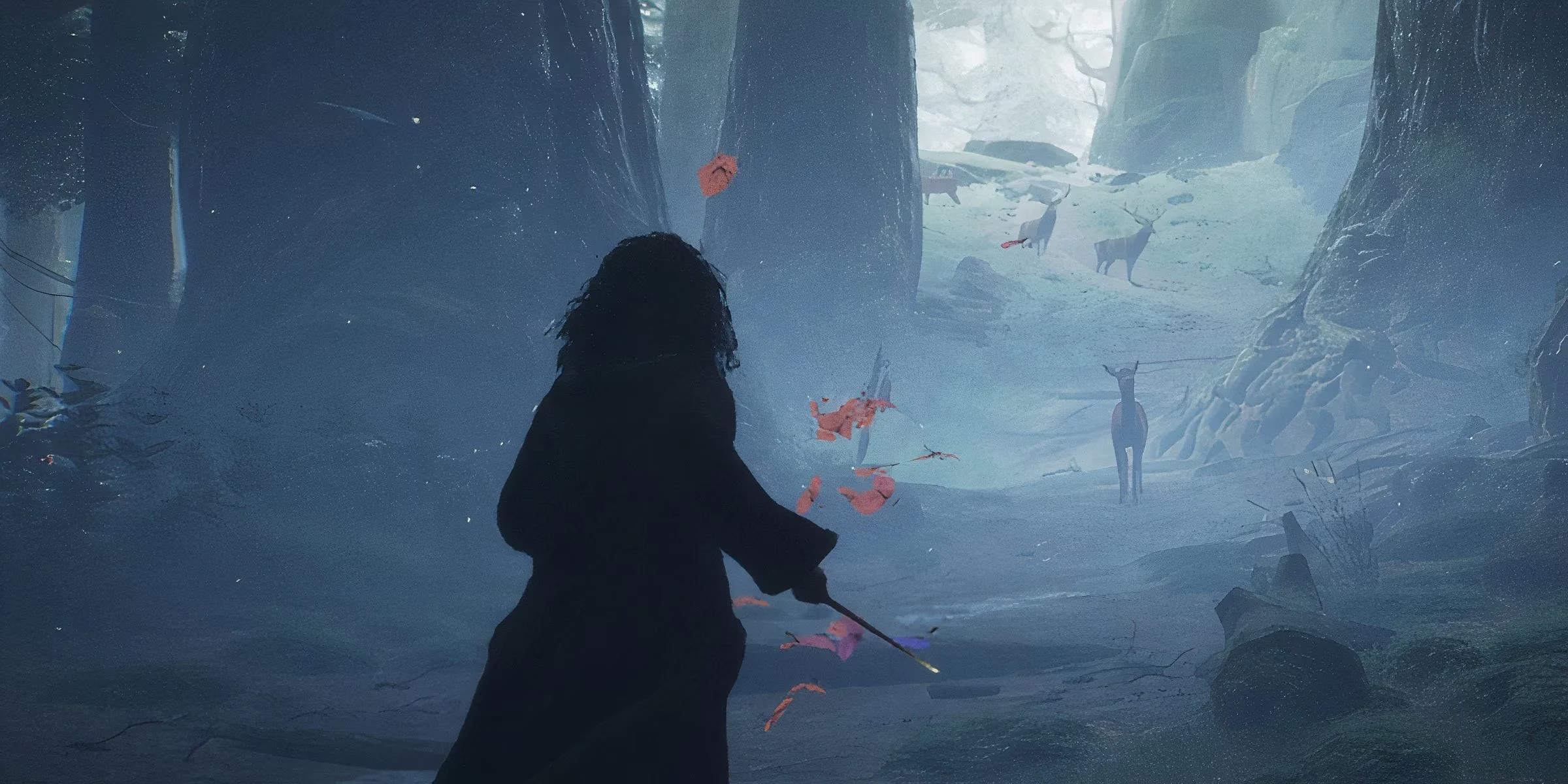Hogwarts Legacy has already enchanted players with its sprawling castle and vibrant characters, yet the interactions often boil down to mundane tasks from professors or fetch quests from students. As players roam the Scottish Highlands and Hogsmeade, they encounter a cast of NPCs—some quirky, some forgettable—but the real magic could unfold in a sequel through animated portraits. These painted figures, currently adorning walls as mere decorations, hold untapped potential to transform Hogwarts into a living, breathing entity. Imagine strolling through the grand stairwells and suddenly striking up a conversation with a portrait that shares tales of ancient wizards; it’s like unlocking a time capsule where history whispers directly to you, making the castle feel less like a static backdrop and more like a dynamic companion. This evolution would not only address the repetitiveness of current NPC interactions but also deepen the immersion in ways that resonate with players who crave richer lore and spontaneity. 😊
Current State of NPCs in Hogwarts Legacy
In the original game, players interact with a handful of companions, professors, and miscellaneous students:
-
Professors: They assign repetitive gameplay tasks, such as brewing potions or casting spells, and reward players with new abilities. While functional, these interactions often feel transactional, like a chore list rather than an engaging narrative.
-
Students: Fellow Hogwarts attendees offer odd requests, like retrieving lost items or solving minor puzzles, which can become tedious over time.
-
Companions: Three core 'companion' characters provide more personal story arcs, but their presence is limited, leaving exploration phases feeling isolated at times.
For instance, here’s a quick comparison of NPC types and their impact:
| NPC Type | Role in Gameplay | Player Engagement Level |
|---|---|---|
| Professors | Assign tasks, teach spells | Moderate (often routine) |
| Students | Give fetch quests, minor interactions | Low (easily overlooked) |
| Companions | Drive personal stories, combat support | High (memorable moments) |
| Ghosts & Portraits | Minimal interaction (e.g., Map Chamber) | Very Low (underutilized) |
This setup, while charming, leaves players yearning for more depth. As one explores the castle, the silence in empty corridors can evoke a sense of loneliness, almost as if the walls are holding their breath. But animated portraits could breathe life into these spaces, turning every hallway into a stage for impromptu storytelling.
The Untapped Potential of Animated Portraits
Animated portraits in Hogwarts Legacy currently play a minor role, such as in the Map Chamber where players communicate with the Keepers—long-gone figures who guide the main story. However, a sequel could expand this exponentially by making portraits central to daily exploration. Picture this: portraits that roam between frames like dancers in a grand ball, effortlessly gliding from one painting to another, offering players snippets of Hogwarts history or quirky anecdotes. These characters could be dressed in unique attire reflecting their eras, from medieval wizards to modern Quidditch stars, instantly conveying individuality without lengthy introductions. 
Why focus on portraits? They offer several advantages over traditional NPCs:
-
Accessibility: Portraits are fixed to walls, making them easy to locate if players remember their spots—no more wandering aimlessly to find a quest-giver.
-
Lore Depth: Each portrait could hold centuries of stories, enriching the Harry Potter universe with tales of past battles, romances, or magical discoveries. Stopping to chat might reveal hidden secrets, like how a portrait of a 17th-century alchemist shares tips on potion-making that feel organic and rewarding.
-
Dynamic Movement: Unlike static NPCs, portraits can vanish and reappear in different locations, justifying why a character isn’t always available and adding an element of surprise.
Players might find this interaction exhilarating—it’s akin to conversing with a time traveler who bridges eras, making history feel immediate and personal. Another apt metaphor: these portraits are like living bookmarks in a vast library, where each frame flips open to reveal new chapters without overwhelming the player. And while ghosts could be fleshed out more for similar effects, portraits offer a broader range of personalities since they can interact within their frames and even host multiple characters in a single artwork, like a miniature theater troupe performing just for you. 🧙♂️
Personal Reflections and Future Hopes
As a player, delving into Hogwarts Legacy often evokes a mix of wonder and slight disappointment—the castle is visually stunning, but the lack of meaningful NPC interactions can make it feel hollow after the initial awe fades. Chatting with portraits would alleviate this, transforming routine walks into treasure hunts for stories, where every corner might hide a witty painter or a somber historian. It’s not just about adding more characters; it’s about creating moments that stick, like the thrill of stumbling upon a portrait that recounts the founding of Hogsmeade with vivid detail, making the world feel lived-in and magical. Of course, not every portrait needs to be interactive—selective depth would prevent clutter—but prioritizing this in a sequel could set a new standard for open-world RPGs, where environments are as communicative as the people within them.
In conclusion, just as the game’s castle walls hold echoes of the past, animated portraits in a Hogwarts Legacy sequel could revive the spirit of exploration, turning static halls into vibrant conversation hubs. This approach responds directly to the opening sentiment: by moving beyond mundane tasks to embrace the whimsy of living art, the sequel wouldn’t just continue the legacy—it would elevate it into an enchanting dialogue between player and history, ensuring every visit to Hogwarts feels like coming home to a world that listens and responds. ✨